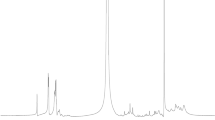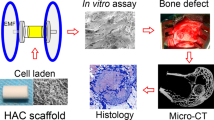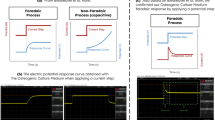Abstract
Mesenchymal stem cells (MSCs) have a great potential in the field of tissue engineering and regenerative medicine on account of their ability to self-renew and differentiate into various lineages. MSCs could be differentiated by a number of ways. Electric field is known to bring about differentiation, migration, proliferation, and reorientation of MSCs. Hence, we aim to create a bioreactor to attain osteodifferentiation of human-derived MSCs in the presence of osteoinduction medium (OIM) in combination with or without alternating current (AC) fields. A stimulation bioreactor was specially designed for the exposure of adipose-derived stem cells (ASCs) to an electric field of 20 mV/cm, 60 kHz. The electric field potential (E) within the chamber was simulated using COMSOL. The morphology, proliferation, and osteogenic differentiation of ASCs under the influence of electrical stimulation were studied. By week three, electrically stimulated ASCs exhibited their typical spindle-shaped morphology. Stimulated ASCs were more intensely stained with alkaline phosphatase and alizarin red, the markers of osteogenic differentiation, as compared to the unstimulated control groups. Darker stained regions correlated with the COMSOL simulation which showed constant electric potential at the same place. The results depicted a clear difference between the effect of constant and varying electric potential on osteodifferentiation of ASCs. Picogreen assay revealed lower DNA contents of electrically stimulated ASCs compared to the control group. In this study, we have additively enhanced the osteodifferentiation potential of ASCs by electrical stimulation and have proved that it is constant electric field potential which specifically augments osteogenic differentiation. We have successfully developed a bioreactor to improve the osteodifferentiation of ASCs by an electrical field, which could be applied in regenerative therapy strategies of bone fracture treatment.








Similar content being viewed by others
References
Zuk, P. A., Zhu, M., Mizuno, H., Huang, J., Futrell, J. W., Katz, A. J., et al. (2001). Multilineage cells from human adipose tissue: implications for cell-based therapies. Tissue Engineering, 7(2), 211–228.
Locke, M., Windsor, J., & Dunbar, P. R. (2009). Human adipose-derived stem cells: Isolation, characterization and applications in surgery. ANZ Journal of Surgery, 79(4), 235–244. https://doi.org/10.1111/j.1445-2197.2009.04852.x.
Rath, S. N., Strobel, L. A., Arkudas, A., Beier, J. P., Maier, A.-K., Greil, P., et al. (2012). Osteoinduction and survival of osteoblasts and bone-marrow stromal cells in 3D biphasic calcium phosphate scaffolds under static and dynamic culture conditions. Journal of Cellular and Molecular Medicine, 16(10), 2350–2361. https://doi.org/10.1111/j.1582-4934.2012.01545.x.
Kim, I. S., Song, J. K., Song, Y. M., Cho, T. H., Lee, T. H., Lim, S. S., et al. (2009). Novel effect of biphasic electric current on in vitro osteogenesis and cytokine production in human mesenchymal stromal cells. Tissue Engineering Part A, 15(9), 2411–2422. https://doi.org/10.1089/ten.tea.2008.0554.
Hronik-Tupaj, M., Rice, W. L., Cronin-Golomb, M., Kaplan, D. L., & Georgakoudi, I. (2011). Osteoblastic differentiation and stress response of human mesenchymal stem cells exposed to alternating current electric fields. Biomedical Engineering Online, 10(1), 9.
McCaig, C. D. (2005). Controlling cell behavior electrically: Current views and future potential. Physiological Reviews, 85(3), 943–978. https://doi.org/10.1152/physrev.00020.2004.
Rath, S. N., Nooeaid, P., Arkudas, A., Beier, J. P., Strobel, L. A., Brandl, A., et al. (2013). Adipose- and bone marrow-derived mesenchymal stem cells display different osteogenic differentiation patterns in 3D bioactive glass-based scaffolds: ADSCs and BMSCs show different osteogenic differentiation patterns in 3D bioactive glass-based scaffolds. Journal of Tissue Engineering and Regenerative Medicine. https://doi.org/10.1002/term.1849.
Rath, S. N., Arkudas, A., Lam, C. X., Olkowski, R., Polykandroitis, E., Chroscicka, A., et al. (2012). Development of a pre-vascularized 3D scaffold-hydrogel composite graft using an arterio-venous loop for tissue engineering applications. Journal of Biomaterials Applications, 27(3), 277–289. https://doi.org/10.1177/0885328211402243.
Ciombor, D. M., & Aaron, R. K. (2005). The role of electrical stimulation in bone repair. Foot and Ankle Clinics, 10(4), 579–593. https://doi.org/10.1016/j.fcl.2005.06.006.
Mobini, S., Leppik, L., & Barker, J. H. (2016). Benchmarks. BioTechniques, 60, 95–98.
Maidhof, R., Tandon, N., Lee, E. J., Luo, J., Duan, Y., Yeager, K., et al. (2012). Biomimetic perfusion and electrical stimulation applied in concert improved the assembly of engineered cardiac tissue: Cardiac tissue engineering with perfusion and electrical stimulation. Journal of Tissue Engineering and Regenerative Medicine, 6(10), e12–e23. https://doi.org/10.1002/term.525.
Rath, S. N., Brandl, A., Hiller, D., Hoppe, A., Gbureck, U., Horch, R. E., et al. (2014). Bioactive copper-doped glass scaffolds can stimulate endothelial cells in co-culture in combination with mesenchymal stem cells. PLoS ONE, 9(12), e113319. https://doi.org/10.1371/journal.pone.0113319.
Ruifrok, A. C., Johnston, D. A., et al. (2001). Quantification of histochemical staining by color deconvolution. Analytical and Quantitative Cytology and Histology, 23(4), 291–299.
Strobel, L., Rath, S., Maier, A., Beier, J., Arkudas, A., Greil, P., et al. (2014). Induction of bone formation in biphasic calcium phosphate scaffolds by bone morphogenetic protein-2 and primary osteoblasts: Induction of bone formation in biphasic calcium phosphate scaffolds. Journal of Tissue Engineering and Regenerative Medicine, 8(3), 176–185. https://doi.org/10.1002/term.1511.
Meng, S., Rouabhia, M., & Zhang, Z. (2011). Electrical stimulation in tissue regeneration. Rijeka: INTECH Open Access Publisher. Retrieved from http://cdn.intechweb.org/pdfs/18016.pdf.
Thrivikraman, G., Madras, G., & Basu, B. (2014). Intermittent electrical stimuli for guidance of human mesenchymal stem cell lineage commitment towards neural-like cells on electroconductive substrates. Biomaterials, 35(24), 6219–6235. https://doi.org/10.1016/j.biomaterials.2014.04.018.
Jaiswal, N., Haynesworth, S. E., Caplan, A. I., & Bruder, S. P. (1997). Osteogenic differentiation of purified, culture-expanded human mesenchymal stem cells in vitro. Journal of Cellular Biochemistry, 64(2), 295–312.
Hronik-Tupaj, M., & Kaplan, D. L. (2012). A review of the responses of two- and three-dimensional engineered tissues to electric fields. Tissue Engineering Part B, 18(3), 167–180. https://doi.org/10.1089/ten.teb.2011.0244.
Creecy, C. M., O’Neill, C. F., Arulanandam, B. P., Sylvia, V. L., Navara, C. S., & Bizios, R. (2013). Mesenchymal stem cell osteodifferentiation in response to alternating electric current. Tissue Engineering Part A, 19(3–4), 467–474. https://doi.org/10.1089/ten.tea.2012.0091.
Lorich, D. G., Brighton, C. T., Gupta, R., Corsetti, J. R., Levine, S. E., Gelb, I. D., et al. (1998). Biochemical pathway mediating the response of bone cells to capacitive coupling. Clinical Orthopaedics and Related Research, 350, 246–256.
Wang, W., Wang, Z., Zhang, G., Clark, C. C., & Brighton, C. T. (2004). Up-regulation of chondrocyte matrix genes and products by electric fields. Clinical Orthopaedics and Related Research, 427, S163–S173.
Xu, J., Wang, W., Clark, C. C., & Brighton, C. T. (2009). Signal transduction in electrically stimulated articular chondrocytes involves translocation of extracellular calcium through voltage-gated channels. Osteoarthritis and Cartilage, 17(3), 397–405. https://doi.org/10.1016/j.joca.2008.07.001.
Clark, C. C., Wang, W., & Brighton, C. T. (2014). Up-regulation of expression of selected genes in human bone cells with specific capacitively coupled electric fields: Electrical stimulation of human osteoblasts. Journal of Orthopaedic Research, 32(7), 894–903. https://doi.org/10.1002/jor.22595.
Sun, L.-Y., Hsieh, D.-K., Yu, T.-C., Chiu, H.-T., Lu, S.-F., Luo, G.-H., et al. (2009). Effect of pulsed electromagnetic field on the proliferation and differentiation potential of human bone marrow mesenchymal stem cells. Bioelectromagnetics, 30(4), 251–260. https://doi.org/10.1002/bem.20472.
Taylor, R. C., Cullen, S. P., & Martin, S. J. (2008). Apoptosis: Controlled demolition at the cellular level. Nature Reviews Molecular Cell Biology, 9(3), 231–241. https://doi.org/10.1038/nrm2312.
Cooper, G. M. (2000). Cell proliferation in development and differentiation. Retrieved from http://www.ncbi.nlm.nih.gov/books/NBK9906/.
Golub, E. E., & Boesze-Battaglia, K. (2007). The role of alkaline phosphatase in mineralization. Current Opinion in Orthopaedics, 18(5), 444–448.
Gershovich, J. G., Dahlin, R. L., Kasper, F. K., & Mikos, A. G. (2013). Enhanced osteogenesis in cocultures with human mesenchymal stem cells and endothelial cells on polymeric microfiber scaffolds. Tissue Engineering Part A, 19(23–24), 2565–2576. https://doi.org/10.1089/ten.tea.2013.0256.
Huang, Z., Ren, P.-G., Ma, T., Smith, R. L., & Goodman, S. B. (2010). Modulating osteogenesis of mesenchymal stem cells by modifying growth factor availability. Cytokine, 51(3), 305–310. https://doi.org/10.1016/j.cyto.2010.06.002.
Acknowledgements
The authors would like to thank Dr. Renu John and Dr. Vimal Prabhu for help with the equipment required for stimulation studies.
Author information
Authors and Affiliations
Corresponding author
Ethics declarations
Conflict of interest
No potential conflict of interest was reported by the authors.
Ethics Approval
The lipoaspirate and umbilical cord were obtained from the patient after informed consent. It was carried out under the approval of Institutional Ethics Committee.
Electronic supplementary material
Below is the link to the electronic supplementary material.
40846_2018_373_MOESM1_ESM.tif
Supplementary Fig. S1: Characterization of ASCs a) After 3 weeks of osteoinduction, the cells are stained by alkaline phosphatase; b) after adipo-induction of 2 weeks, the cells are stained by oil red O; c) after chondrogenic induction for 3 weeks, cells at high density are stained with alcian blue in a 24 well plate d) FACS analysis of surface markers of ASCs. Supplementary material 1 (TIFF 3934 kb)
40846_2018_373_MOESM2_ESM.tif
Supplementary Fig. S2: Characterization of HUVECs. After ten days of culture in EGM-2, a) HUVECs forming tube-like structures on Matrigel and b) stained with Lectin. Supplementary material 2 (TIFF 1040 kb)
40846_2018_373_MOESM3_ESM.tif
Supplementary Fig. S3: HUVECs and hASCs under electrical stimulation on week 3: a) Group UC, b) Group UG, c) Group UE, d) Group AC, e) Group AG, f) Group AE. Scale bar in all images is 100 μm. Supplementary material 3 (TIFF 3138 kb)
Rights and permissions
About this article
Cite this article
Eswaramoorthy, S.D., Bethapudi, S., Almelkar, S.I. et al. Regional Differentiation of Adipose-Derived Stem Cells Proves the Role of Constant Electric Potential in Enhancing Bone Healing. J. Med. Biol. Eng. 38, 804–815 (2018). https://doi.org/10.1007/s40846-018-0373-2
Received:
Accepted:
Published:
Issue Date:
DOI: https://doi.org/10.1007/s40846-018-0373-2




